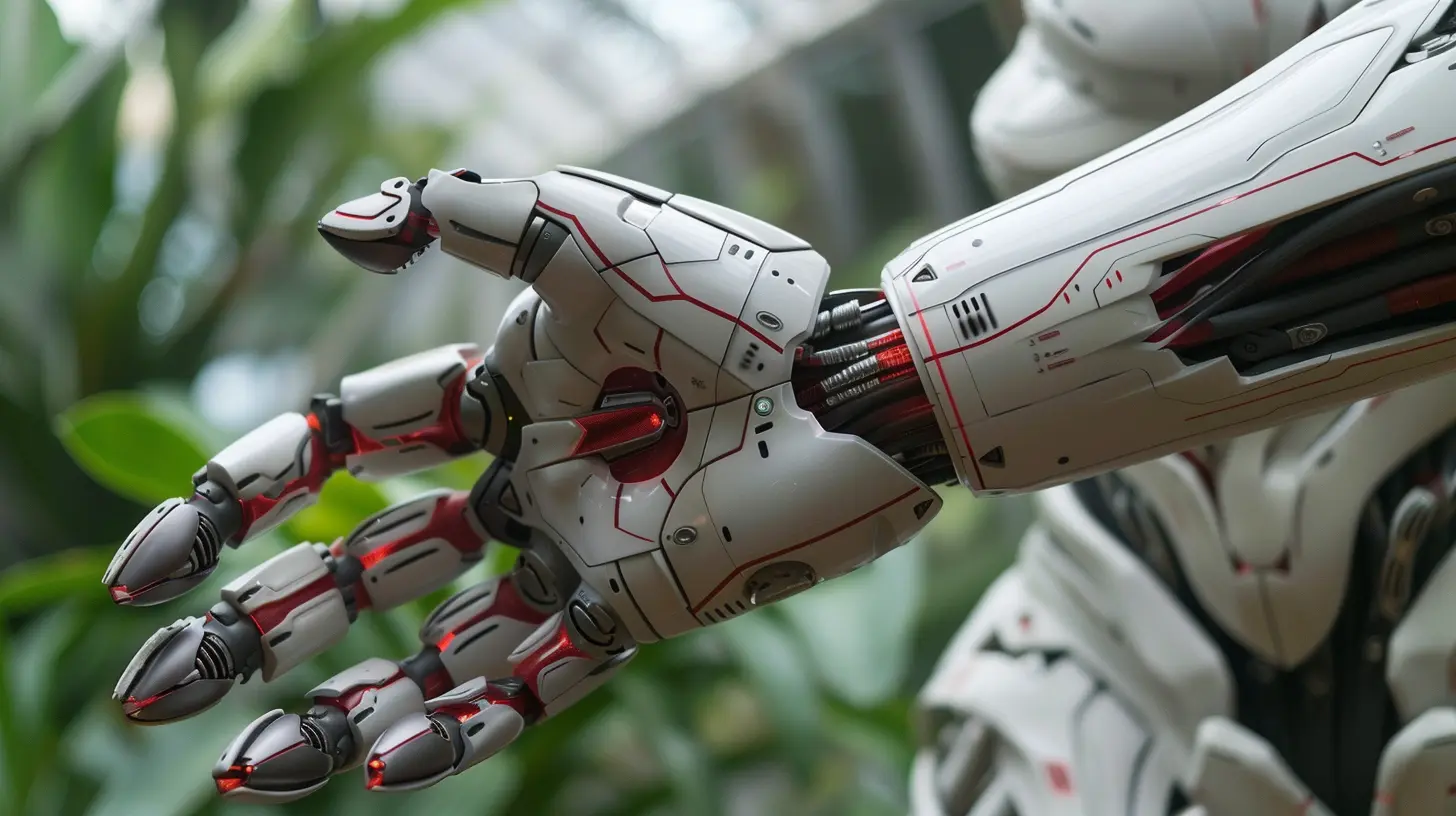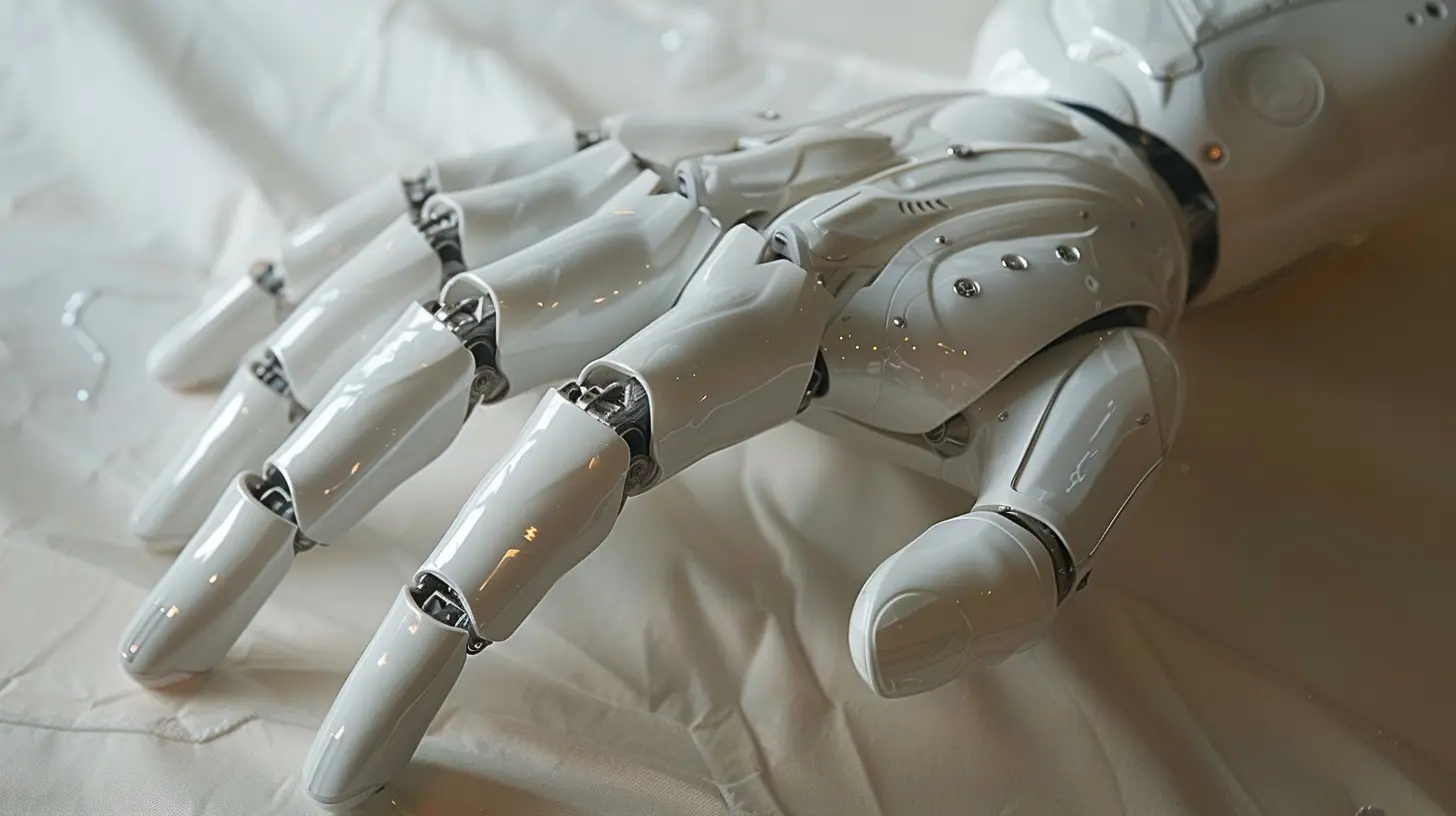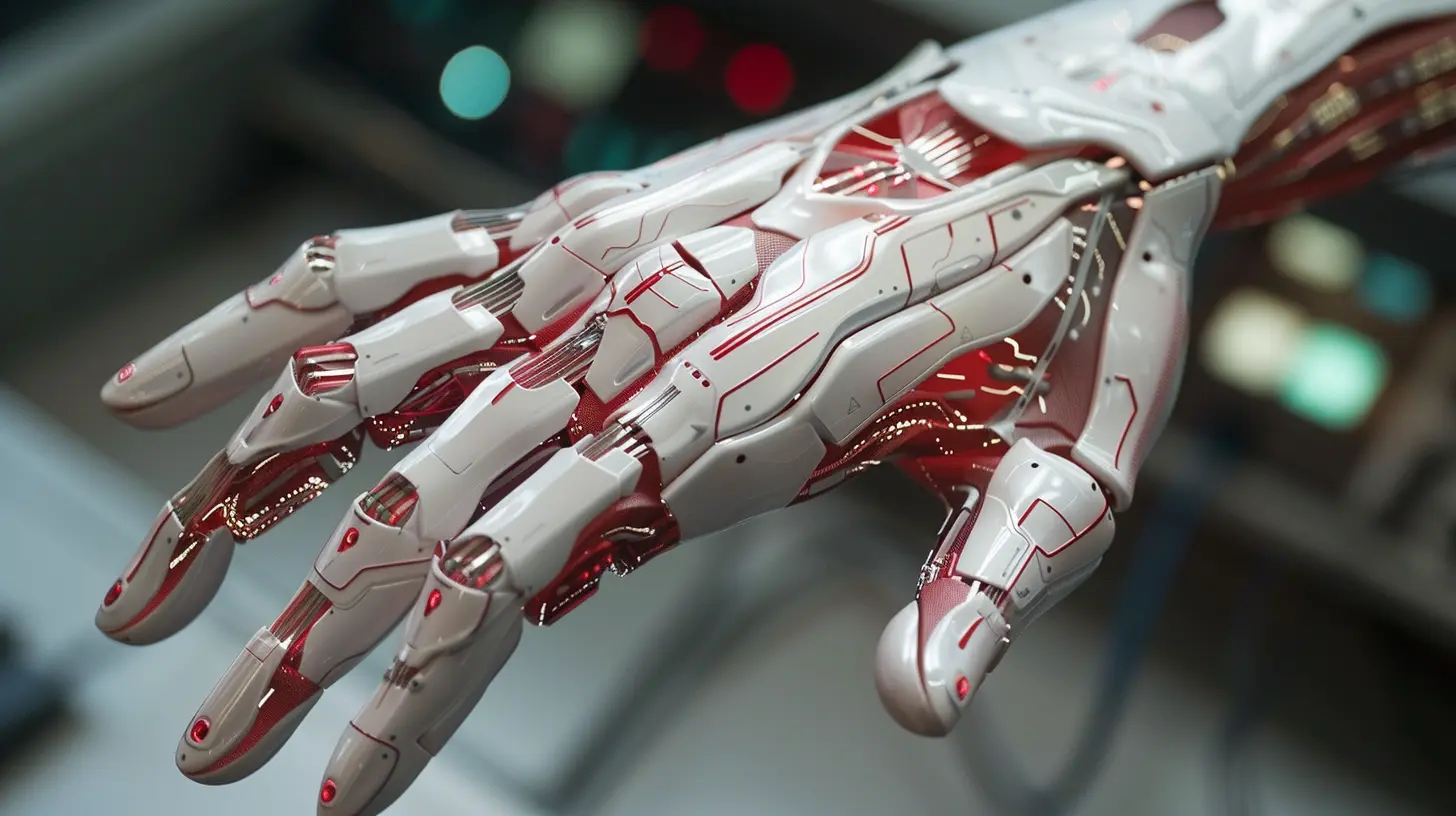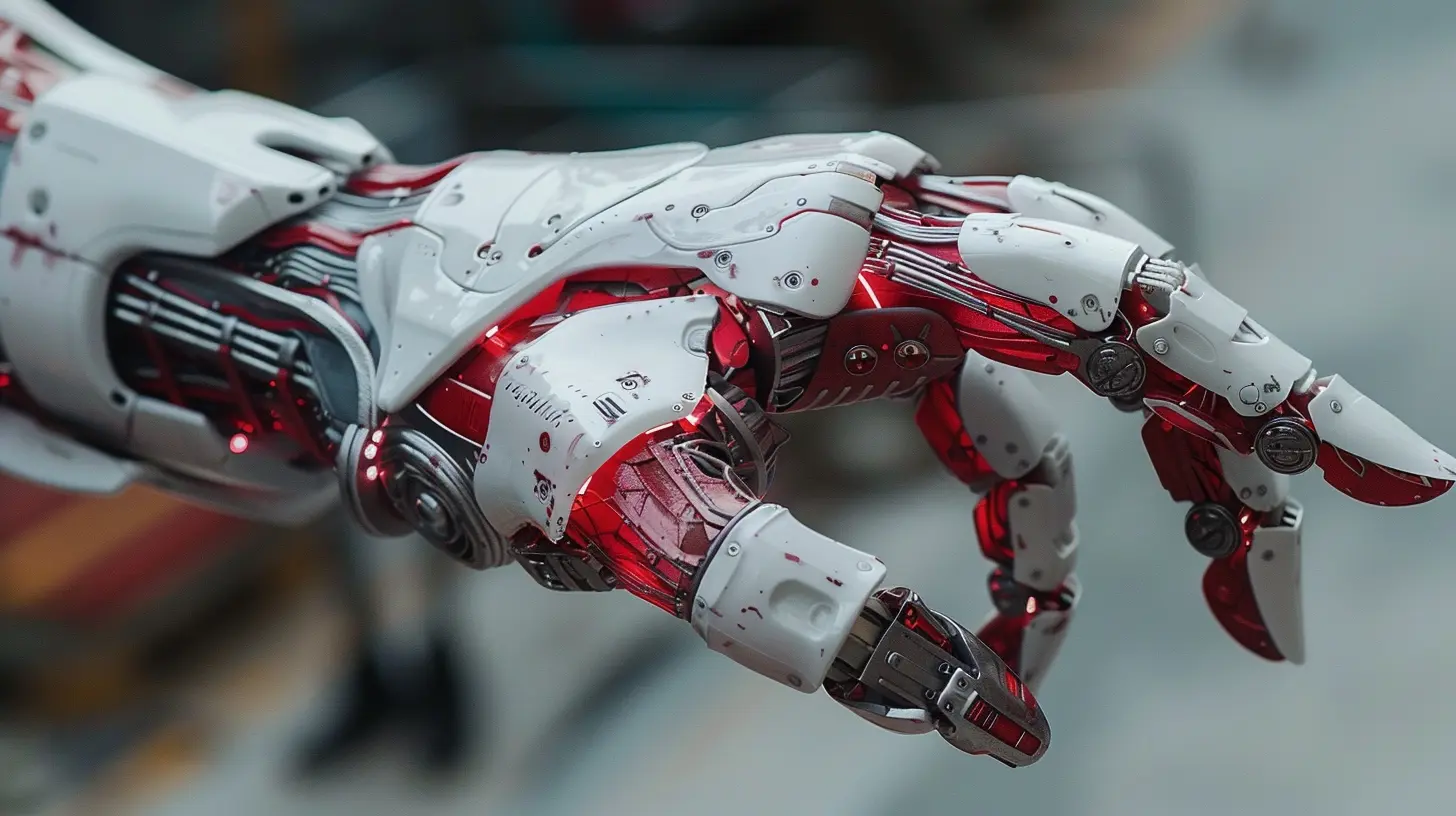Artificial Skin: A Breakthrough in Robotics and Prosthetics
12 October 2025
Imagine shaking hands with a robot that feels just like a human. Not just warm and soft, but capable of feeling pressure, heat, and even pain. Sounds like science fiction, right? Well, thanks to mind-blowing advances in artificial skin technology, we're inching closer to this becoming our new reality.
Artificial skin isn’t just a cool sci-fi concept anymore. It’s a revolutionary development that’s shaking up both the robotics and prosthetics industries. In this post, we’re diving deep into why it’s such a game-changer, how it works, and what the future could look like with synthetic skin.
Let’s peel back the layers—pun intended.

What Exactly Is Artificial Skin?
Alright, before we dive into the nitty-gritty, let’s start with the basics.Artificial skin is a synthetic material designed to mimic the properties of human skin. We’re not talking about something that just looks human (although aesthetics matter). We’re talking about flexible, sensitive, multi-layered systems that can actually sense environmental stimuli—pressure, temperature, texture, even pain.
In other words, this isn’t your average rubber glove stretched over some wires. We’re talking about a high-tech skin that can feel.

Why Is Artificial Skin So Important?
You might be wondering, “Why do we even need this?” Great question. The answer lies in two rapidly advancing fields: robotics and prosthetics.For Prosthetics: It's All About Feeling Again
For someone who’s lost a limb, modern prosthetics can offer impressive functionality. They can walk, grip, and even gesture. But what’s missing? That all-important sense of touch.Artificial skin could change that completely. By outfitting prosthetic limbs with sensitive synthetic skin, amputees could feel again—sense the softness of a baby’s skin or the warmth of a cup of coffee. That’s not just convenience; it’s life-changing.
For Robotics: Adding the Human Touch
Robots can perform surgeries, deliver your Amazon packages, and even make you coffee. But they suck at one crucial thing—delicate human interaction.Artificial skin could turn clunky machines into gentle helpers, especially in caregiving roles. Robots with skin that senses pressure or temperature could safely assist the elderly or disabled without harm.
Basically, artificial skin is the bridge that closes the gap between human and machine.

How Does Artificial Skin Work?
Let’s dig a little deeper—how does this magic work?Artificial skin typically combines flexible electronics, advanced sensors, and special polymers to replicate the key properties of human skin. Here's the breakdown.
1. Sensors Galore
Human skin has thousands of nerve endings. Artificial skin tries to replicate that through a network of tiny sensors that measure:- Pressure
- Stretch
- Temperature
- Humidity
- Vibration
Some versions even respond to pain! (Yes, artificial skin that says “Ouch” when poked too hard. Wild.)
2. Flexible Electronics
No one wants stiff, board-like skin. The tech here is designed to bend, twist, and stretch just like real human skin. These systems use ultra-thin, flexible materials that conduct electricity even when they’re being pulled or pressed.3. Smart Polymers and Nanomaterials
This is where the superhero science comes in. Smart materials like graphene, carbon nanotubes, and piezoelectric polymers help mimic the elasticity, texture, and responsiveness of natural skin.Some designs even heal themselves when damaged. Think of it as giving robots Wolverine-like regenerative powers.

Real-World Applications That’ll Blow Your Mind
Let’s step out of the lab and into the real world. Artificial skin is already making waves in several areas, with big changes on the horizon.Prosthetic Limbs That Feel
Researchers at institutions like Stanford and MIT have developed artificial skin that lets amputees feel pressure through their prosthetic limbs. Imagine being able to shake someone's hand and know if they’re squeezing too hard or lightly tapping—absolutely surreal.Humanoid Robots with Empathy
Okay, maybe not full-blown empathy (yet), but robots with artificial skin can recognize warmth, cold, and pressure. That opens the door to real physical interaction with humans—be it hugging a child or helping an elderly person out of bed.Medical Training Simulators
Ever heard of surgical dummies? Now imagine one that actually "feels" and reacts like a human. Artificial skin makes that possible, helping medical students get hands-on experience with lifelike models before they ever touch a real patient.Smart Wearables
We're also looking at artificial skin being integrated into wearables. Think fitness trackers that stick to your body like a second skin and offer hyper-accurate vitals monitoring.Challenges to Crack
No breakthrough comes without hurdles. Artificial skin may sound like the perfect tech, but researchers are still battling a few key challenges:1. Power Consumption
All those sensors and electronics need juice. Creating self-powered or ultra-low-power designs is still a work in progress.2. Data Overload
Human skin processes a ton of sensory input naturally. Getting artificial skin to interpret this deluge of data in real time? Yeah, that's a tough nut to crack.3. Durability
Real skin heals. Artificial skin… not so much (yet). Making it tough enough to withstand daily wear and tear is a major design challenge.4. Cost
We’re not at mass-market levels yet. Most current artificial skin prototypes are expensive, which limits accessibility for everyday prosthetic users.
The Breakneck Speed of Innovation
The good news? Researchers are racing at full speed. For instance:- A team at the University of Glasgow developed a synthetic skin that can "learn" from what it touches using AI-powered sensors.
- Engineers at Caltech created a type of electronic skin that recognizes hand gestures.
- Scientists in South Korea built a skin that can “sweat” and regulate temperature like the real deal.
Each breakthrough is another step toward lifelike prosthetics and intuitive robots.
What the Future (Probably) Looks Like
Fast forward 10–15 years, and imagine this:- Amputees with full sensory feedback from advanced prosthetics.
- Robots that change baby diapers with the gentleness of a human nanny.
- Wearables that detect diseases just by analyzing your sweat.
Heck, even sci-fi concepts like cyborgs with enhanced senses could become real. Artificial skin could be the missing piece that makes man-machine hybrids legit.
More than just a tool, artificial skin has the potential to redefine how humans and machines interact—not with buttons, screens, or voice commands, but through physical touch.
Ethical Questions We Can’t Ignore
Let’s get real for a minute. As cool as this tech is, it opens up some serious ethical questions.- If robots feel pain, does that change how we treat them?
- Should synthetic senses be limited to restoring human abilities—or can we enhance them?
- Who gets access to this tech first? Wealthy countries only?
These questions matter. As artificial skin gets more advanced, regulators, engineers, and society as a whole need to think about not just what we can do, but what we should do.
The Bottom Line
Artificial skin isn’t just another fancy innovation—it’s a pivotal technology that could transform both robotics and prosthetics in profound ways.We're talking about giving machines the power to feel, and humans the gift of touch after trauma. That’s not just progress—that’s poetry in motion.
So whether you're a tech enthusiast, a robotics nerd, or someone affected by limb loss, keep an eye on this space. The future of artificial skin is only getting more exciting—and it's closer than you think.
all images in this post were generated using AI tools
Category:
Future TechAuthor:

Reese McQuillan
Discussion
rate this article
1 comments
Kieran Perez
Imagine a world where touch transcends flesh—artificial skin not only mimics sensation but may hold secrets that blur the lines between human and machine. Is our humanity at stake?
October 19, 2025 at 3:09 AM

Reese McQuillan
Absolutely, the development of artificial skin raises profound questions about identity and humanity. As we integrate these technologies into our lives, we must carefully consider the implications for what it means to be human.


